By Raghav Narayanswamy
Might Singapore have three species of sand plover? It might seem an odd question – we usually only mention the Lesser Sand Plovers, which are pretty common, with the rare Greater sometimes turning up. What’s the third one then?
A recent study (Wei et al., 2022) has revealed that the Lesser Sand Plover as previously defined is in fact composed of two species, one of which is more closely related to the Greater Sand Plover than it is to the other group of Lesser Sand Plovers.
- The Tibetan Sand Plover Charadrius atrifrons, which breeds across the Tibetan Plateau and Central Asia, is composed of three subspecies: pamirensis, atrifrons, and schaeferi.
- The Siberian Sand Plover C. mongolus, which breeds further east, in eastern Siberia, is more closely related to the Greater Sand Plover than it is to the Tibetan birds. It has two subspecies: mongolus and stegmanni.
In this post we’ll touch on the identification of the two species previously grouped together to form the ‘Lesser Sand Plover’ complex. For more information on separating these two from the Greater Sand Plover Charadrius leschenaultii, check out the species writeup for that species.
Range (based on Eaton et al., 2021)
The two species don’t have overlapping breeding ranges, but do slightly overlap in their wintering ranges, mostly in Borneo and Sulawesi. The more widespread Tibetan winters from the eastern coast of Africa across the Indian Ocean, stretching east to Borneo, Sulawesi, and Java; Siberian Sand Plover winters in the eastern Indonesian archipelago from Kalimantan, Bali, and Sulawesi eastwards, New Guinea, Australia, and occasionally New Zealand.
Only Tibetan Sand Plover is currently known from Singapore, and most of mainland southeast Asia, for that matter. At the time of writing, there are no records of Siberian from Thailand and Peninsular Malaysia either, suggesting these birds tend to stick pretty rigidly to their migratory paths. Having said that, Singapore has seen birds that are much more shocking than Siberian Sand Plover in recent years, so let’s have a look at the key features separating the two.
Identification (based on Tables 3–6 in Bakewell, 2022)
Shorebirds don’t always lend themselves well to easy identification and the Siberian and Tibetan Sand Plovers promise to be another difficult pair. Rather than list out all the features which can potentially be used to distinguish the two, we will focus on a few critical points which could be used to easily ‘flag’ a potential Siberian in the field.
A few structural features serve as noticeable pointers for the two species. Siberian has a blunt-tipped, thicker, and usually shorter bill, with a pronounced bulge on the culmen (near the bill-tip), giving it a “stubby” look; Tibetan has a longer and more pointed bill (although juveniles can have shorter bills). Tibetan has a slightly longer tarsus as well, so in flight, its toes project noticeably past the tail, whereas Siberian is shorter-legged and its toes do not project beyond the tail (or may appear to project very slightly past the tail).
There are plumage differences as well, in non-breeding-plumaged, breeding-plumaged, and first-winter birds, but these can be affected by moult and wear. In breeding plumage, Siberian Sand Plovers have a large white patch on the forehead, sometimes broken by a single vertical black bar at the centre, while Tibetan usually shows no white or limited white on the forehead (this feature can be affected by wear, and is probably particularly unreliable on early-arriving birds in August, when some Tibetan Sand Plovers may be seen with more extensive white on the forehead).
In juvenile-plumaged and first-winter birds, which have more extensive white or buff fringes to the coverts than adult birds, Siberian shows broader and longer patches on the breast-sides, sometimes forming a complete breast band. Tibetan has more restricted dark areas on the breast, often accompanied by a buffish wash to the breast, which is usually absent in Siberian. Siberian can sometimes (but not always) show dusky flanks, a feature lacked by Tibetan.
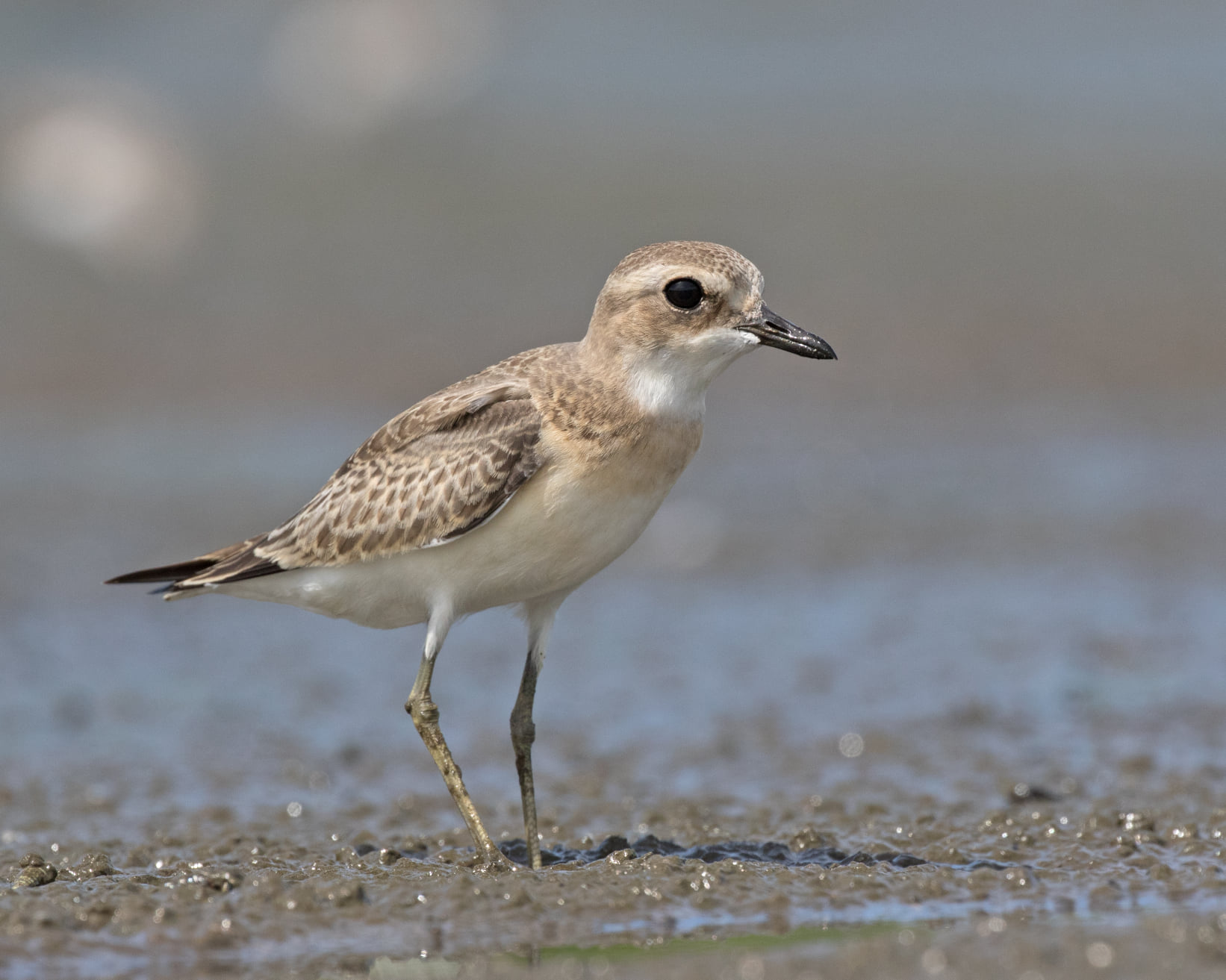
Adult birds in non-breeding plumage lack the obvious covert-fringing of juveniles. Siberian Sand Plovers in this plumage usually show dusky feathering on the flanks, again absent in Tibetan, which shows white flanks (note: moulting Tibetan Sand Plovers may appear to have dark areas on the flanks, but these are in fact areas without feathers rather than actual brown feathers). Tibetan also usually has an incomplete breast-band, compared to Siberian, which generally has a well-marked and complete brown breast-band. There is a gradient between the white forehead and the brown crown on Tibetan, and the area in between appears a smudgy brownish-white, while Siberian lacks this smooth gradient. Often, a dark border above the forehead further reinforces this effect in Siberian Sand Plovers.
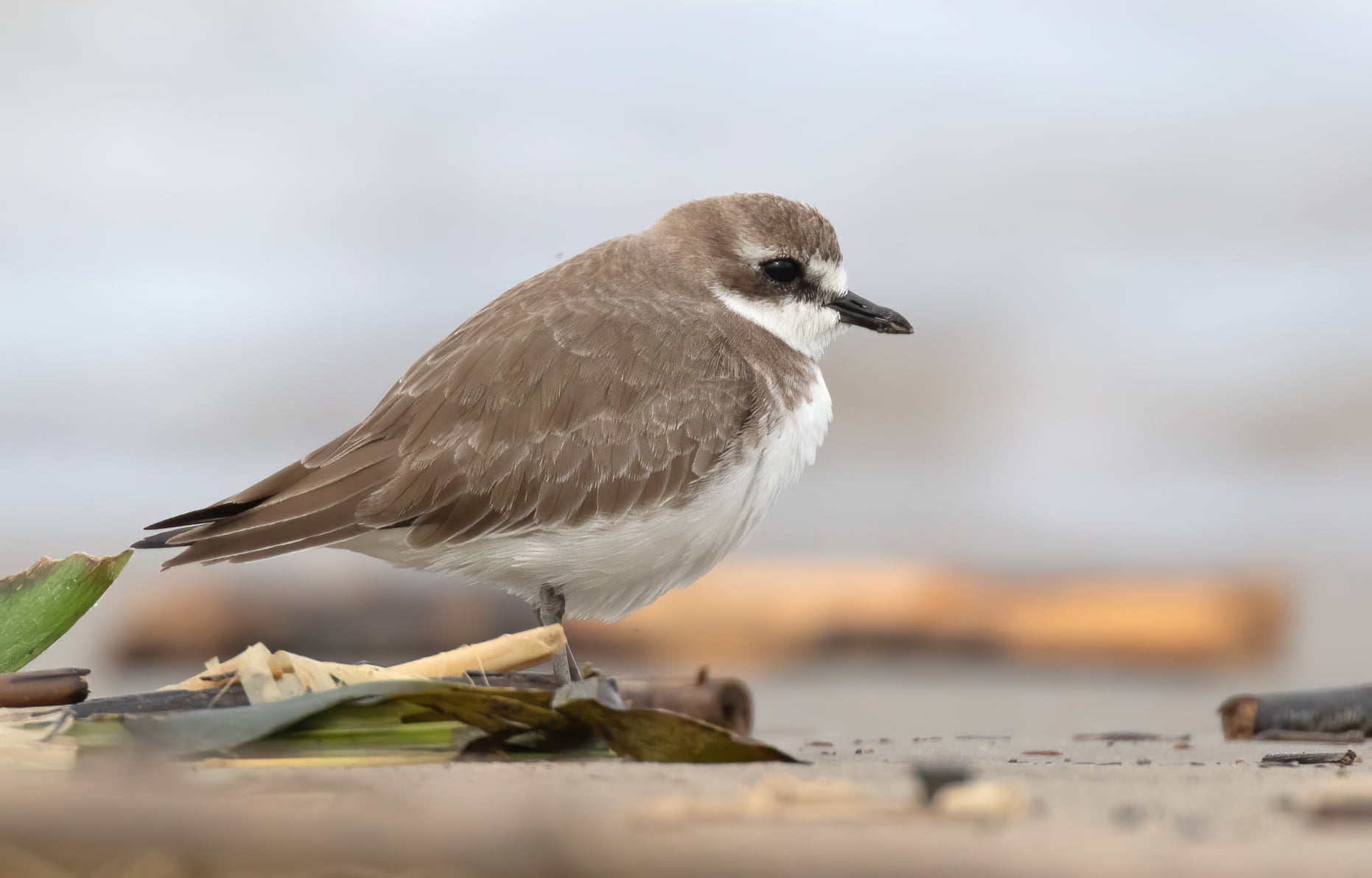
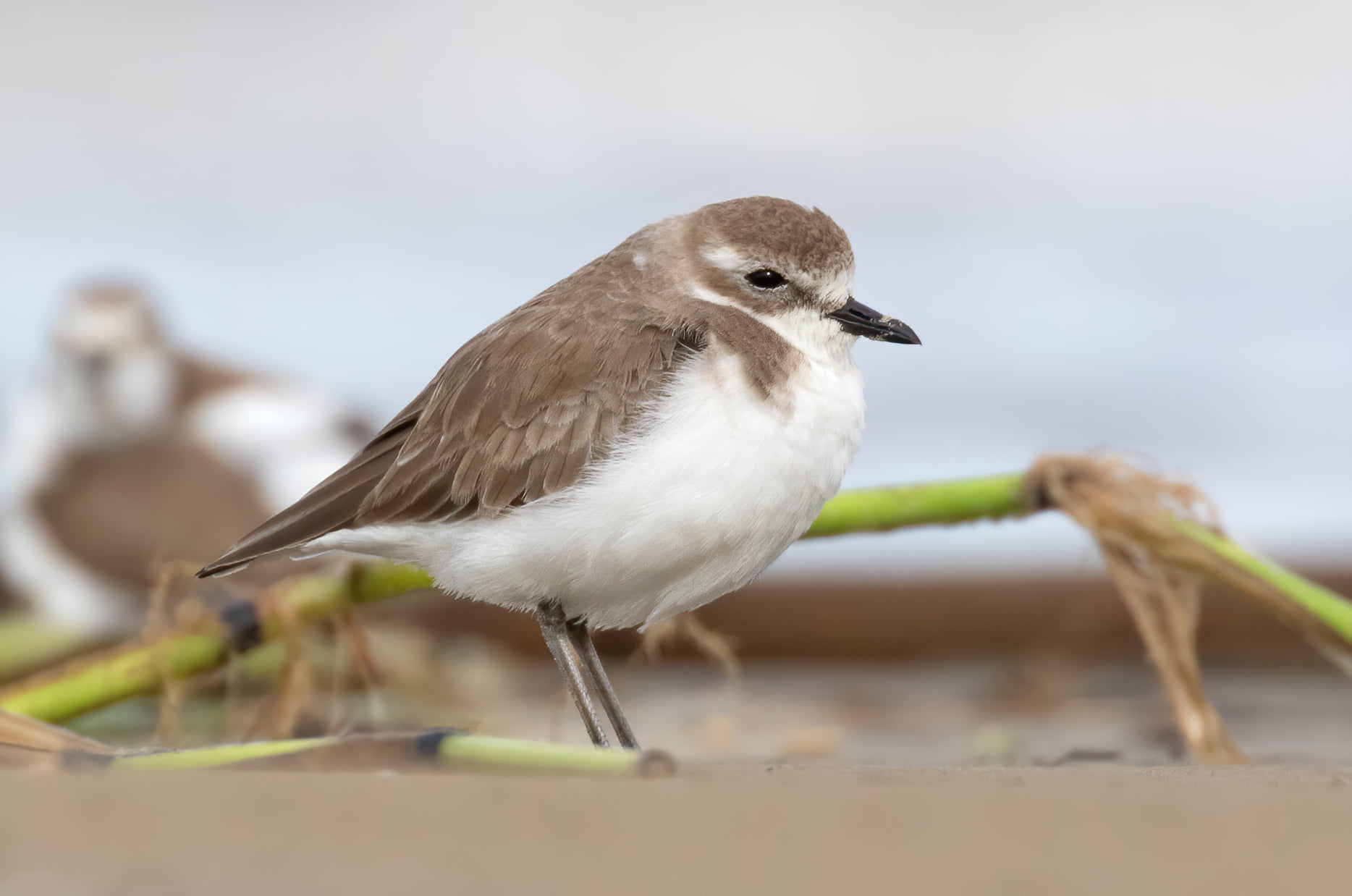
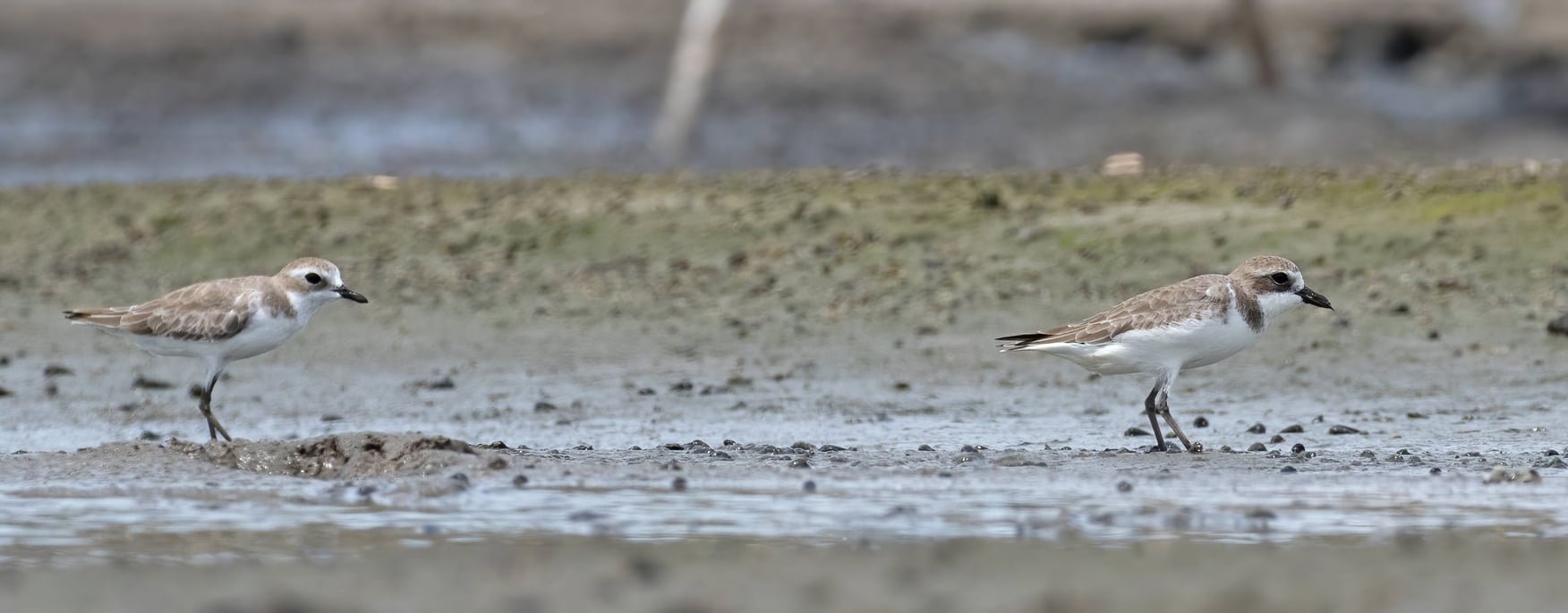
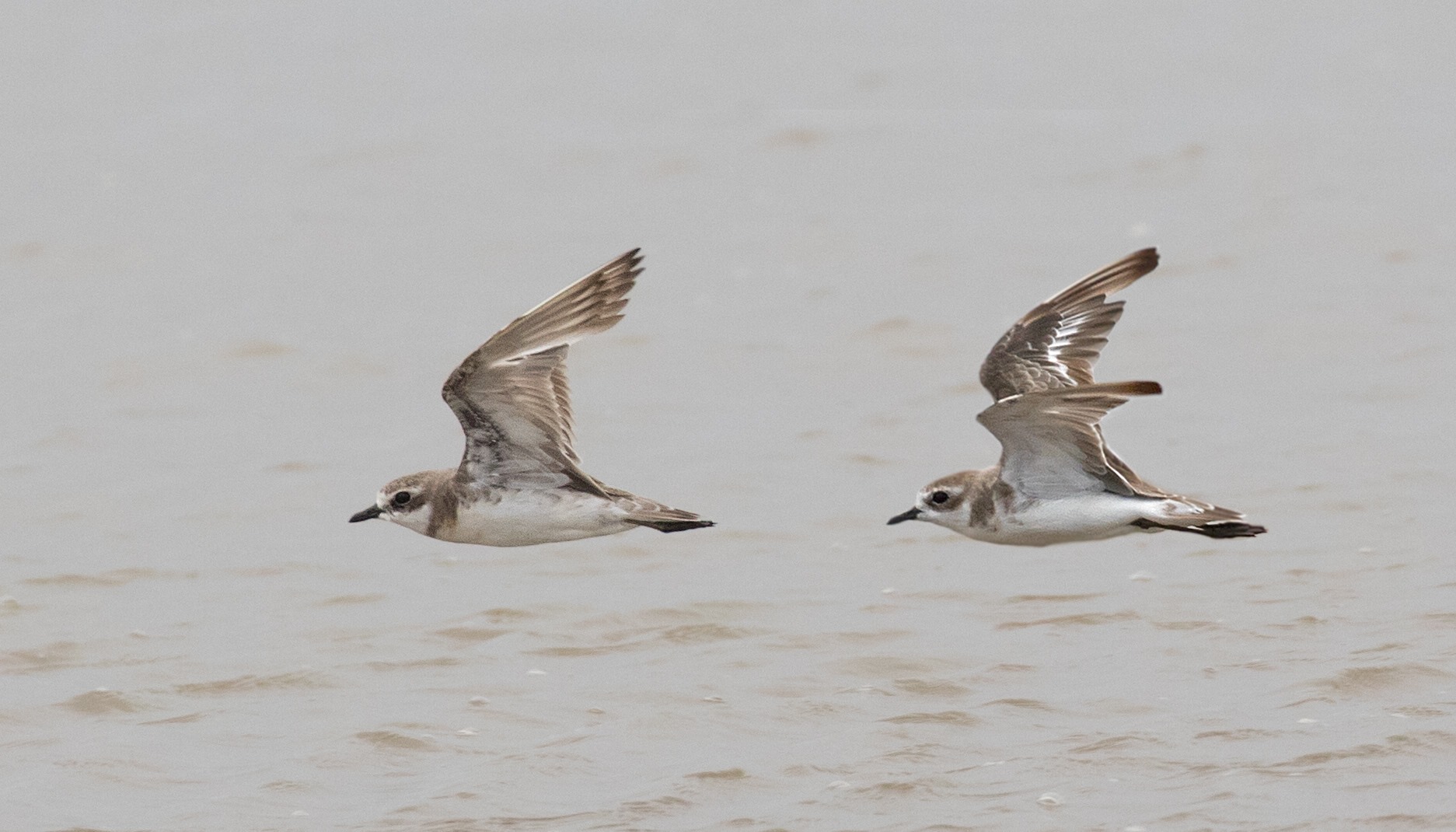
More details…
This article focuses on the most readily noticeable and (relatively) reliable traits used to separate Siberian and Tibetan Sand Plovers. No one feature is a reliable indicator on its own, though, and even a combination of features may sometimes fail to provide the correct identification especially when faced with poor views.
It’s also easier to recognize many of these features in a video, and this comparison video is an excellent example.
If you’re still in need of more sand plover content, we suggest having a look at Dave Bakewell’s article listed in the references below, which provides a much more in-depth identification guide complete with illustrative figures. The article can be found in BirdingASIA 38, available for purchase from the Oriental Bird Club. BirdingASIA is a twice-yearly publication and a quality bulletin of Asian birds. By joining the Oriental Bird Club, you’ll be contributing to conservation and will receive every issue of BirdingASIA to go with it.
We hope that this article pushes more of us to look harder at those boring sand plovers the next time round. Please do post your photos of birds which you think might be Siberian on Facebook!
Acknowledgements
I thank Dave Bakewell who kindly allowed us to reproduce his photos for this article. Dave Bakewell and Keita Sin also offered valuable advice on the draft. Thanks as well to all contributors who have uploaded photos online – we looked for a Siberian but couldn’t find one from Singapore!
References
Bakewell, D. N. (2022). Identification of Siberian Charadrius [mongolus] mongolus and Tibetan C. [m.] atrifrons Sand Plovers. BirdingASIA, 38, 23–35.
Eaton, J. A., van Balen, S., Brickle, N. W., & Rheindt, F. E. (2021). Birds of the Indonesian Archipelago: Greater Sundas and Wallacea (Second Edition). Lynx Edicions, Barcelona.
Wei, C., Schweizer, M., Tomkovich, P. S., Arkhipov, V. Y., Romanov, M., Martinez, J., Lin, X., Halimubieke, N., Que, P., Mu, T., Huang, Q., Zhang, Z., Székely, T., & Liu, Y. (2022). Genome-wide data reveal paraphyly in the sand plover complex (Charadrius mongolus/leschenaultii). Ornithology, 139(2). https://doi.org/10.1093/ornithology/ukab085
